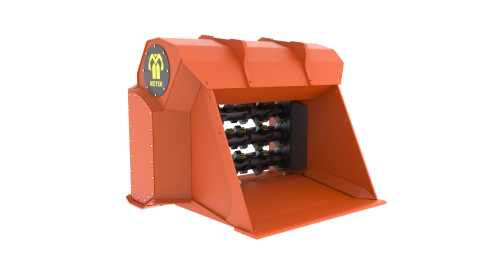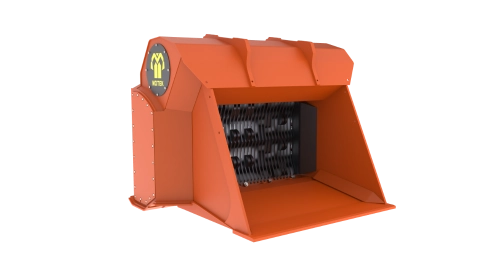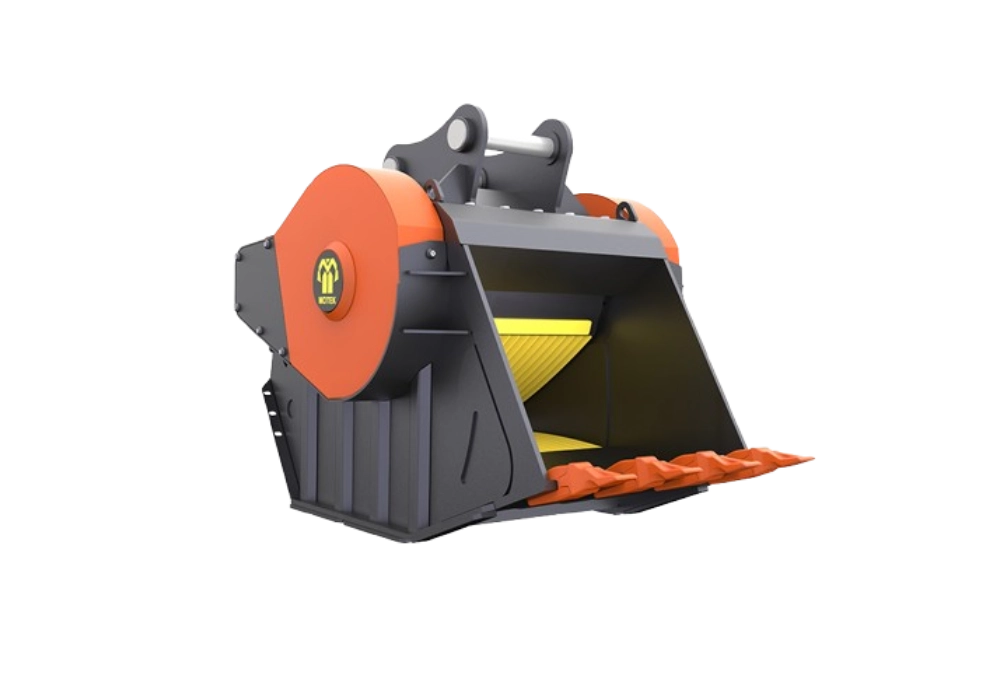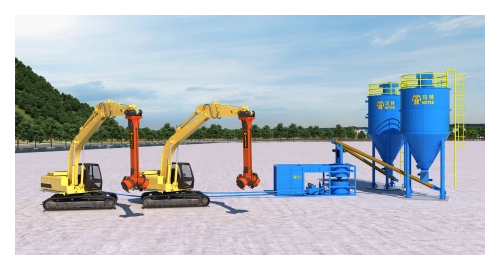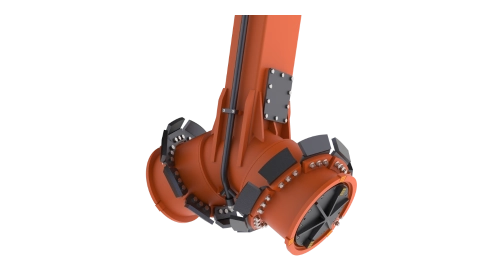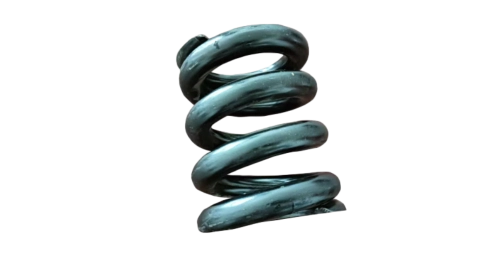MOTEK Screening Buckets in Earthworks
Release time: 2025-03-14

As one of the core equipment in earthwork engineering, MOTEK screening bucket has shown significant advantages in modern engineering construction with its high efficiency, flexibility and environmental protection. Its core function is to achieve refined management and efficient utilization of resources by quickly screening and classifying excavated soil, sand, gravel, construction waste and other materials. The following systematically analyzes the core advantages of the screening bucket in earthwork engineering from multiple dimensions such as construction efficiency, cost control, resource utilization, environmental benefits and applicable scenarios.
Significantly improve construction efficiency
Quick integration and instant operation: MOTEK excavator screening bucket can be directly installed on the excavator or loader without the need for additional fixed screening equipment, saving the time of equipment installation and commissioning. For example, in road construction, the excavator can complete material screening through the screening bucket while excavating the earth, realizing the integrated operation of “excavation-screening-backfilling”, avoiding the time waste of multiple transfers in the traditional process.
Continuous processing capacity: MOTEK screening bucket uses mechanical vibration or rotary screening technology, and its processing capacity can reach 100-500 cubic meters per hour (depending on the model), which is much higher than manual sorting or small screening equipment. For example, in a construction waste treatment project, MOTEK screening bucket completed the sorting of 2,000 tons of mixed materials within 8 hours, while the traditional method took more than 3 times longer.
Reduce process connection: Qualified materials (such as fine soil, sand and gravel) after screening can be directly used for backfill or roadbed paving, without waiting for external supply or secondary processing, greatly shortening the construction period. According to statistics, the use of MOTEK screening buckets can increase the overall progress of earthwork projects by 30%-50%.
Comprehensive cost optimization
Reduce transportation and landfill costs: MOTEK screening bucket for loader can reduce the amount of waste transportation by about 40%-60% through on-site screening. For example, when a construction site processes 100,000 cubic meters of earthwork, MOTEK screening bucket separates 30,000 cubic meters of impurities (such as stones and construction waste), and only 70,000 cubic meters of usable materials need to be transported, saving more than 500,000 yuan in transportation costs.
Reduce equipment investment: Traditional earthwork projects require multiple equipment such as excavators, loaders, screeners, crushers, etc., while MOTEK screening bucket integrates screening and crushing (some models) functions through modular design, and a single device can meet multiple needs. For example, a mine restoration project replaced the traditional screening production line with a screening bucket, reducing equipment procurement costs by 70%.
Save labor costs: Automated screening reduces dependence on manual sorting. Taking a municipal project as an example, after MOTEK screening bucket was adopted, the number of earthwork sorting personnel was reduced from 20 to 5, saving more than 100,000 yuan in labor costs per month.
Maximize resource utilization
Precise classification and recycling: By replacing screens with different apertures (such as 10mm, 30mm, 100mm), MOTEK screening bucket can classify materials into fine soil, medium sand, coarse aggregate and other categories, which can be directly used in different engineering scenarios. For example, a construction waste treatment plant uses a screening bucket to recycle 80% of concrete fragments as recycled aggregates, replacing natural stone, saving about 2 million yuan in material procurement costs.
Soil improvement and ecological restoration: In agricultural development or mine reclamation, MOTEK screening bucket can separate stones and impurities in the soil, retain fertile fine soil for planting, and use stones for foundation reinforcement to achieve “zero waste” of resources.
Environmental protection and sustainable development
Reducing environmental pollution: Dust control: Some screening buckets use wet screening or closed structures, which reduces dust emissions by more than 80% compared to open-air stacking or traditional crushing processes. Noise control: The working noise of the screening bucket is usually less than 75 decibels, which meets the urban construction standards and avoids interference to surrounding residents.
Promoting circular economy: After screening, the recycling rate of bricks, concrete, etc. can reach more than 90%. For example, a city renewal project processed 50,000 tons of construction waste through screening buckets, and the recycled materials were used for the base of new roads, reducing landfill land by 20 acres.
Flexible adaptation to complex working conditions
Terrain and spatial adaptability: MOTEK screening bucket does not require a fixed site and can operate in narrow foundation pits, mountainous areas, rivers and other areas where traditional equipment is difficult to enter. For example, in a subway construction, the screening bucket directly handles the slag in a 15-meter-deep foundation pit to avoid occupying ground space.
Handling complex soil: For clay soil, frozen soil or materials with high humidity, MOTEK screening bucket prevents the sieve holes from being blocked by vibration frequency adjustment or heating function (some models) to ensure continuous operation.
Typical application scenarios and cases
1. Road construction: A highway project uses a screening bucket to handle 500,000 cubic meters of roadbed earthwork. The screened sand and gravel are directly used for the road base, shortening the construction period by 45 days. 2. Building demolition: In a commercial complex demolition project, MOTEK screening bucket recycled 12,000 tons of concrete fragments, with a recycling rate of 85%, saving 3 million yuan in costs. 3. Post-disaster reconstruction: In earthquake-stricken areas, the screening bucket quickly cleans up recyclable materials in the ruins to accelerate the reconstruction process.
Through technological innovation and functional integration, MOTEK screening bucket has solved the pain points of low efficiency, high cost, and high pollution in traditional earthwork projects, becoming an “efficiency multiplier” for modern construction. Its value is not only reflected in direct economic benefits, but also in promoting the transformation of the engineering construction industry to sustainable development through resource recycling and green construction concepts. In the future, with the further application of intelligent control (such as remote monitoring and automatic adjustment of screening parameters), the advantages of screening buckets in earthwork projects will become more significant.

